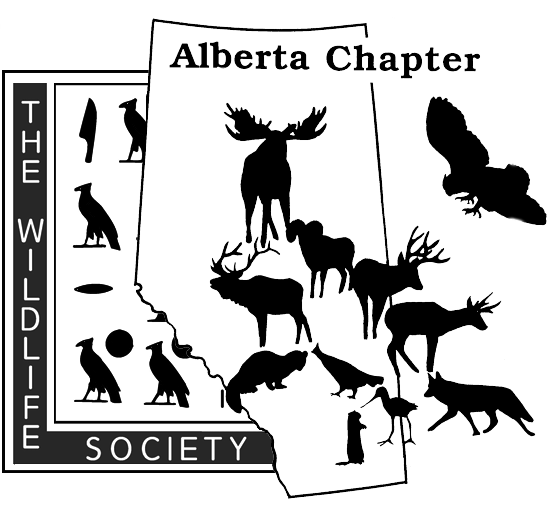Spotlights
At the Alberta Chapter of The Wildlife Society (ACTWS), we are proud to highlight the remarkable achievements of our members and the innovative research being led by our student members. This page celebrates the people behind the science—those who are advancing wildlife conservation through dedicated research, fieldwork, mentorship, and leadership.
From early-career researchers to seasoned professionals, these stories showcase the passion, resilience, and impact of individuals committed to conserving Alberta’s wildlife and wild spaces. We invite you to explore their contributions and be inspired by the incredible work happening across our community.
Know someone whose work deserves recognition—or want to share your own accomplishments? We’d love to hear from you. Please email us at execdirector@actws.ca to submit a spotlight.
Legacy Spotlights
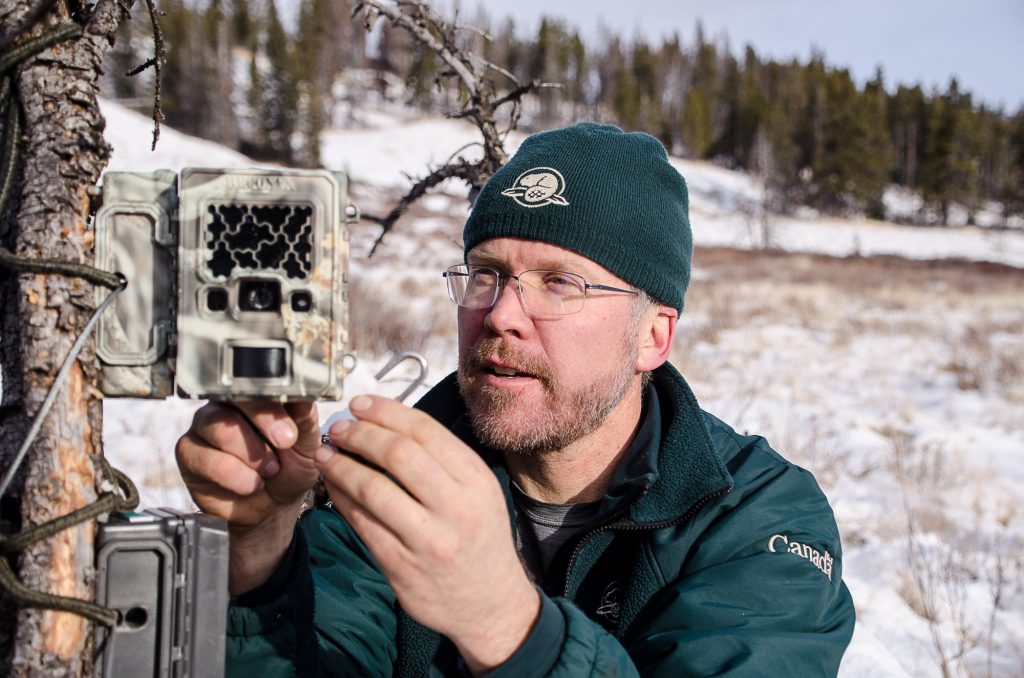
Legacy Spotlight: Karsten Heuer
Written by Dillon Watt & Saundi Stevens
In November 2024, the conservation community said goodbye to Karsten Heuer, a wildlife biologist, park warden, storyteller, and adventurer whose three-decade career with Parks Canada transformed how we approach landscape-level conservation. Born and raised in Calgary to German immigrant parents, Karsten’s love for the outdoors began with family trips that introduced him to the mountains. What started as weekend adventures evolved into a life dedicated to protecting the wild places he understood so intimately. At 56, diagnosed with a rare neurological condition, he chose to end his life on his own terms, surrounded by family in his beloved backyard writing shack in Canmore.
There are lessons held in Karsten’s approach—one which made him a remarkably effective force in protecting wildlife and the wilderness that they depend upon….. Continue Reading.
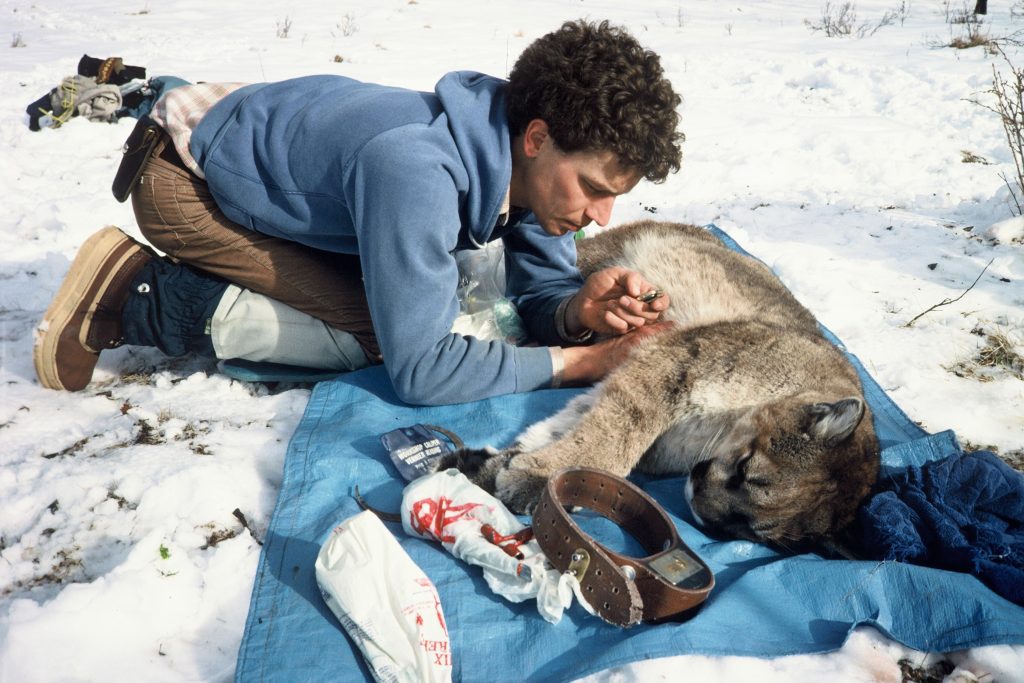
The ACTWS Ian Ross Memorial Scholarship pays tribute to a remarkable biologist whose passion for wildlife, especially large carnivores, left a permanent mark on conservation in Alberta and beyond. Since its inception, the scholarship has supported 31 students with a total of $46,500 in funding, fostering the next generation of wildlife professionals. See the full list of recipients here.
About Ian Ross
Members of The Alberta Chapter of The Wildlife Society lost a fine colleague, contributor, and friend when Ian Ross was killed at the age of 44 in a light aircraft accident while radio tracking lions for the Laikipia Predator Project near Nanyuki, Kenya.
Ian Ross was an exceptional wildlife biologist and conservationist, known for his groundbreaking research on large mammals and his deep dedication to wildlife stewardship. Born in Goderich, Ontario, Ian’s passion for the natural world began early, running a trapline while still in high school. After graduating with honours in Wildlife Biology from the University of Guelph, he pursued a career that took him west to Alberta and ultimately around the world.
Ian worked extensively on cougar and grizzly bear research, playing a pivotal role in projects like the Sheep River Cougar Study, which remains one of the most comprehensive cougar studies in North America…. Continue Reading.
Student Spotlights
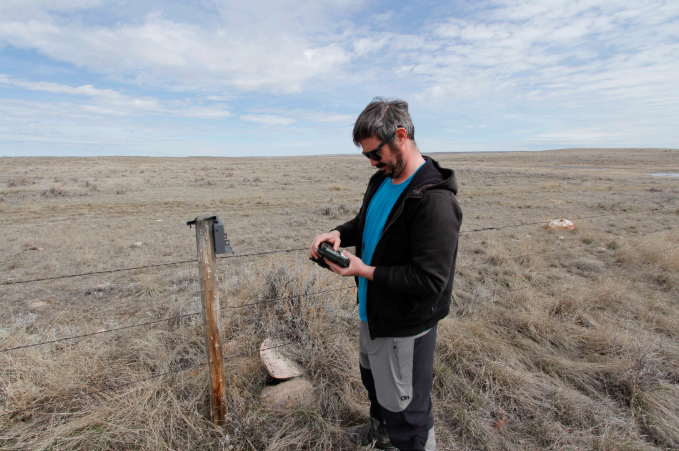
Student Spotlight: Meet Cory Tufts
Cory Tufts at Lethbridge College is currently researching the greater sage-grouse, one of the most imperiled species that reside in the grasslands of Alberta. These prairie dwelling birds face numerous threats, with anthropogenic structures like fences having a significantly detrimental impact on the sage-grouse’s habitat. Fences allow for the exploitation of increased perch availability by predators of sage-grouse, such as great
horned owls or the common raven, increasing their range into areas not previously inhabited. Predation of nests and adults resulting from increased predator presence are major contributors to the sage-grouses’ decline.
To mitigate this issue, the Alberta Conservation Association has installed a novel design of fence (Clipex Fence) which aims to decrease attractiveness for predator species. This is achieved by the use of the metal “T” posts instead of large wooden posts typically used for fencing. Ideally the use of these posts would replace the need for metal spikes and pole caps currently on existing fences within the sage grouse EPO.
To determine the efficacy of this new design, Cory deployed 6 cameras along the Clipex fencing, and 6 cameras along an adjacent traditional wooden fence. The cameras were initially installed in April, and the first 2 months of photos collected. The preliminary data has shown no predators perching on the new fences while multiple instances of perching has been observed on the traditional fencing.
Despite the higher initial cost, the Clipex fences offer multiple advantages, such as lower maintenance, increased fire resistance and adjustable strand heights, making this fencing option an attractive choice in areas where decreasing perch availability is a focus for conservation goals.
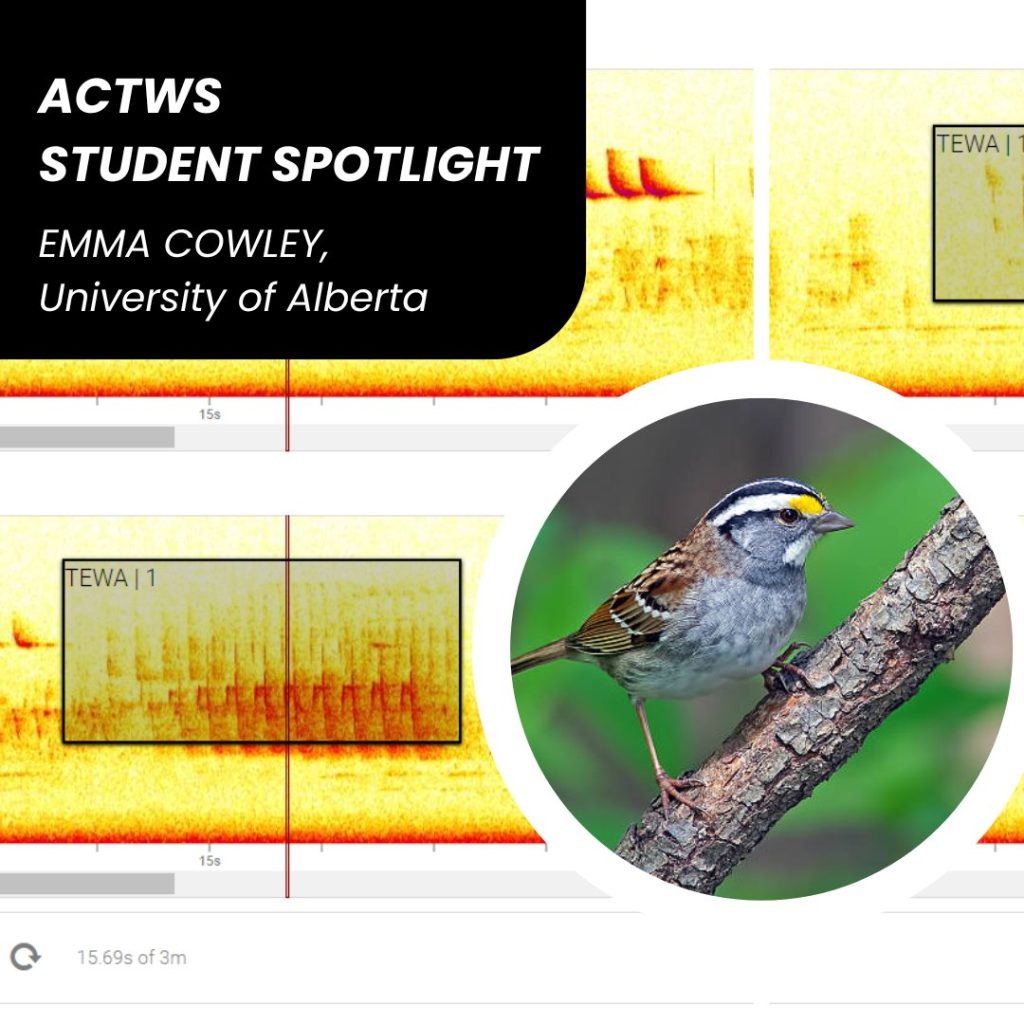
Student Spotlight: Meet Emma Cowley
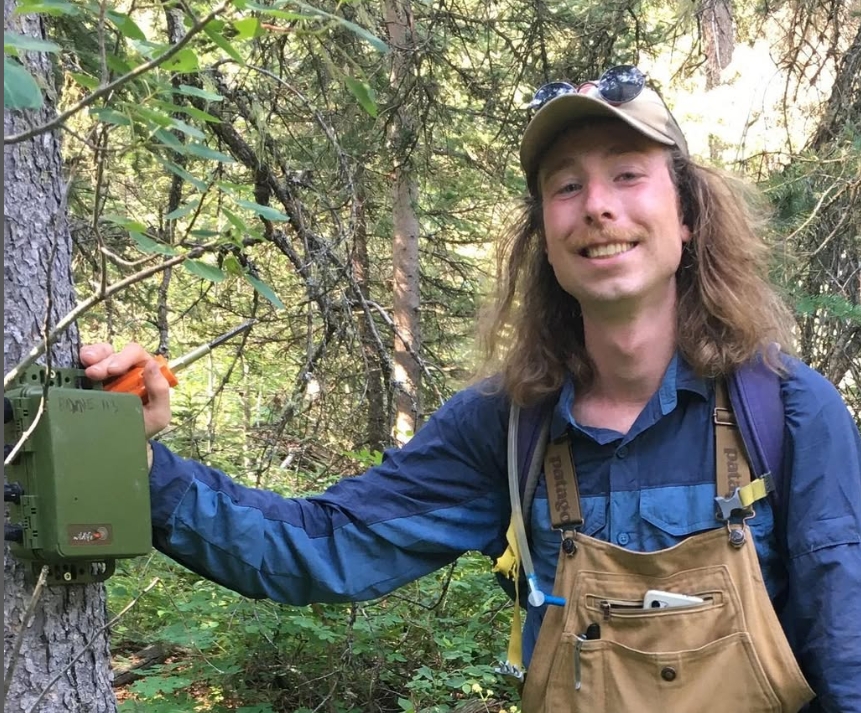
Student Spotlight: Meet Austin Zeller
Pileated woodpeckers are a keystone species across many ecosystems, yet are understudied especially in the western Canadian boreal forest. The goal of my research is to identify how we can better survey for these birds and then apply this knowledge to improve our understanding about pileated woodpecker habitat relationships. To do this I deploy autonomous recording units across boreal which are programmed to record audio during optimal behavioral time periods which, through my research, I have identified. Currently, I am working on comparing two different types of habitat models to see which best describes the relationships between pileated woodpeckers and different habitat variables.
Contact Austin to learn more azeller@ualberta.ca
Member Spotlights
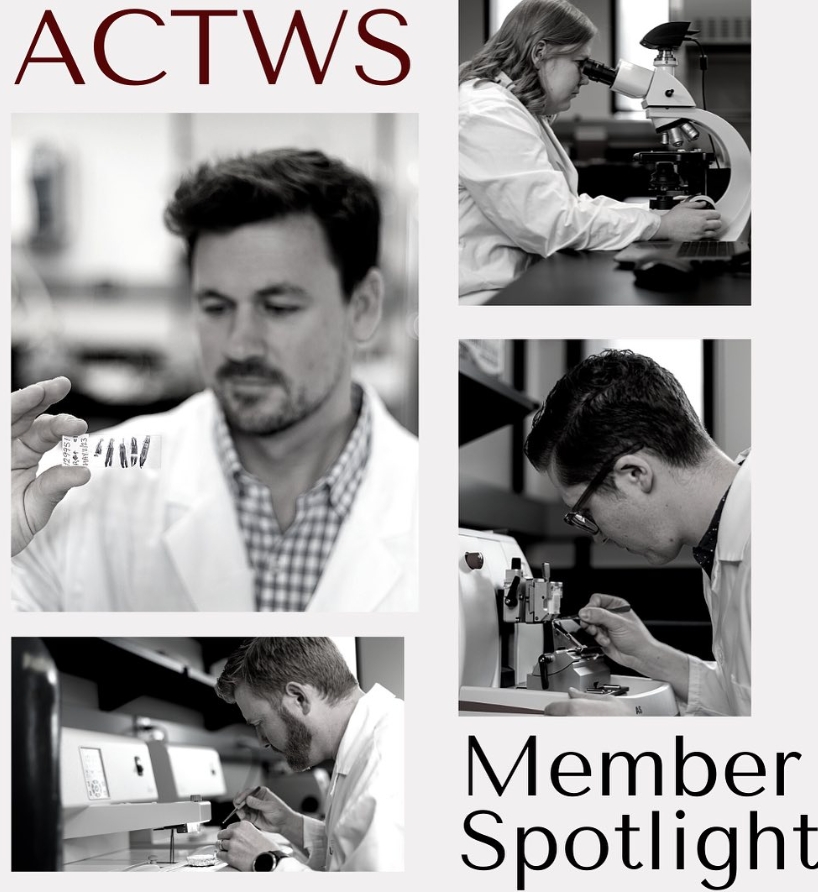
Meet Dr. Everett Hanna
Lethbridge College’s Centre for Technology, Environment, and Design proudly announces the launch of its Wildlife Analytics Lab. This lab offers fee-for-service cementum analysis of wildlife teeth, marking a significant milestone as the first Canadian laboratory to provide this specialized service.
Joining Dr. Hanna on the Wildlife Analytics Lab team are Rhys Hakstol, Jonathan Friesen, and Kelsey Gourlie. This group is dedicated to collaborating with agencies and researchers from across the country, contributing valuable insights to enhance wildlife conservation and management efforts. Its applications extend to epidemiology studies, including chronic wasting disease research.
Cementum analysis involves the examination of cementum layers, a hard tissue covering the roots of teeth. Through this method, the lab can determine the age, reproductive history, and even migratory patterns of various wildlife species. Every year, tens of thousands of teeth collected from wild animals in Canada undergo analysis, enabling precise age estimation and valuable ecological insights.
The Alberta Professional Outfitters Society (@comehuntalberta ) played an instrumental role in establishing the lab by providing more than $145,000 in funding and gifts from its Wildlife Management Fund (WMF).
Highlighting our Members' Achievements
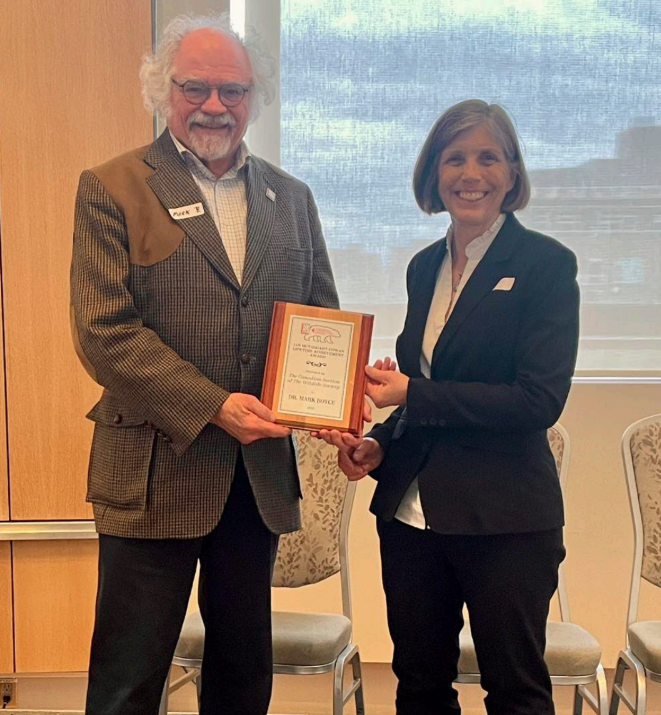
Dr. Mark Boyce Receives the Ian McTaggart-Cowan Lifetime Achievement Award
The CSTWS had a very successful symposium on April 12th and 13th, due to an engaging and inspiring group of speakers and panel members who shared their wealth of knowledge from many different areas of Canada. People who attended included students, professors, consultants, provincial government, NGO
staff and biologists and practitioners. For those who wished to attend but were unable to, stay tuned! The CSTWS will be working on a webinar series to share the symposium talks with their membership.
As part of the symposium, the CSTWS presented this year’s distinguished Ian McTaggart Cowan Lifetime Achievement Award to Dr. Mark Boyce. Dr. Boyce has published six books and close to 350 publications in scientific journals addressing a broad spectrum of theoretical and applied questions that are foundational to science-based conservation. His research has resulted in major increases in ecological understanding that have resulted from his ground-breaking work on many species. Finally, and perhaps most significant, are his pioneering achievements in developing, evaluating, and enhancing the quantitative methods that are essential to the rigorous investigation of ecological phenomena and relationships.
Dr. Boyce was among the small group of leaders who established the Canadian Section of TWS over a decade ago. He served as the Section’s President (2015–16) and Past-president (2016–17) and has been a President of the Alberta Chapter. He served as Editor-in-Chief (1995–97) and Associate Editor (2017–18) for the Journal of Wildlife Management and was the Program Chair for TWS’ Annual Conference held 2015 in Winnipeg, Manitoba. Dr. Boyce has demonstrated his lifelong dedication and commitment to the science-based conservation of wildlife. He has left an indelible mark in the profession within Canada and around the world.
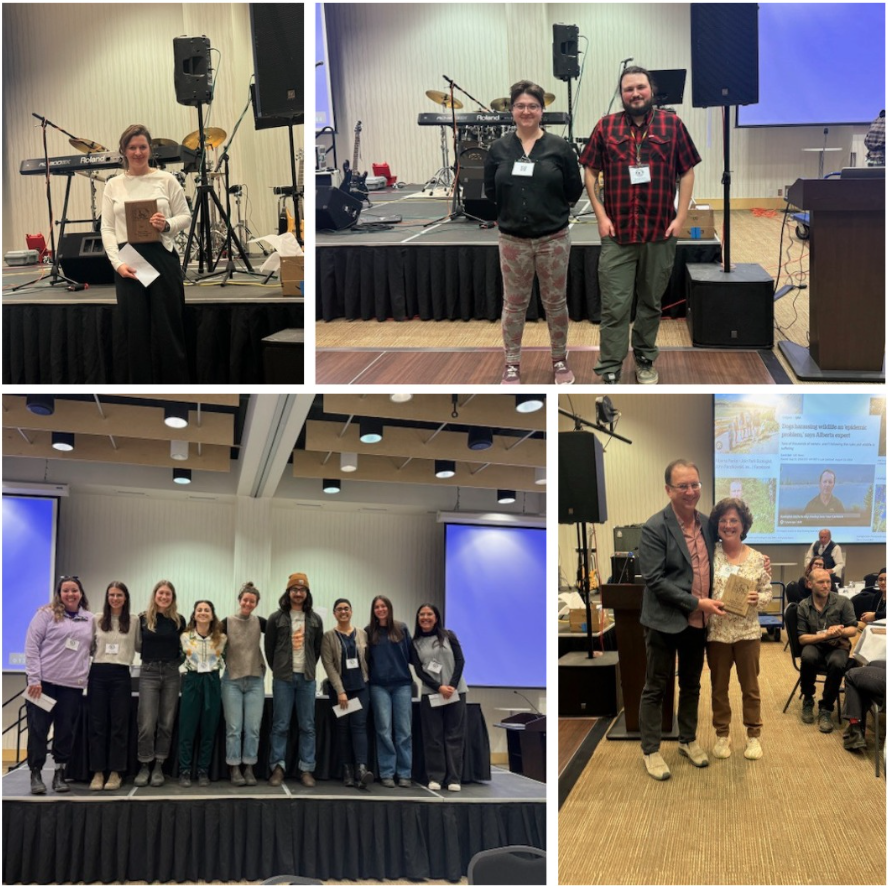
Congratulations to Our ACTWS Award Winners!
We are thrilled to celebrate the incredible contributions of this year’s ACTWS Professional Award winners, Student Scholarship recipients, and Student Presentation winners! Your dedication to wildlife conservation, research, and outreach is truly inspiring.
Professional Award Winners:
Glen Hvenegaard – Outreach Award
John Paczkowski – Dedicated Service Award
Dave Hervieux – William Rowan Distinguished Service Award
Matthew Scrafford et al. “Wolverine density, survival, and population trends in the Canadian boreal forest”– Best Wildlife Publication (Technical)
Lorne Fitch – Best Wildlife Publication (Popular)
Student Scholarship Recipients:
Michelle Hoang – EDI Post-Secondary Student Award
Abigail Cryderman – Robert K. Goddard Memorial Scholarship
Kaitlin Dalzell – Ian Ross Memorial Scholarship
Remington Bracher – William Wishart Post-Graduate Award
Student Presentation Award Winners:
Traditional Talks: Jamie Clarke (1st), Kate Rutherford (2nd), Kaitlyn Courchesne (3rd)
Speed Talks: Aidan Brushett (1st), Alexia Constantinou (2nd), Isabel Giguere (3rd)
Posters: Sara Castro Garcia (1st), Hannah Bordin (2nd), Harsimran Bains (3rd)
Congratulations to all the winners! Your hard work and passion are shaping the future of wildlife science.
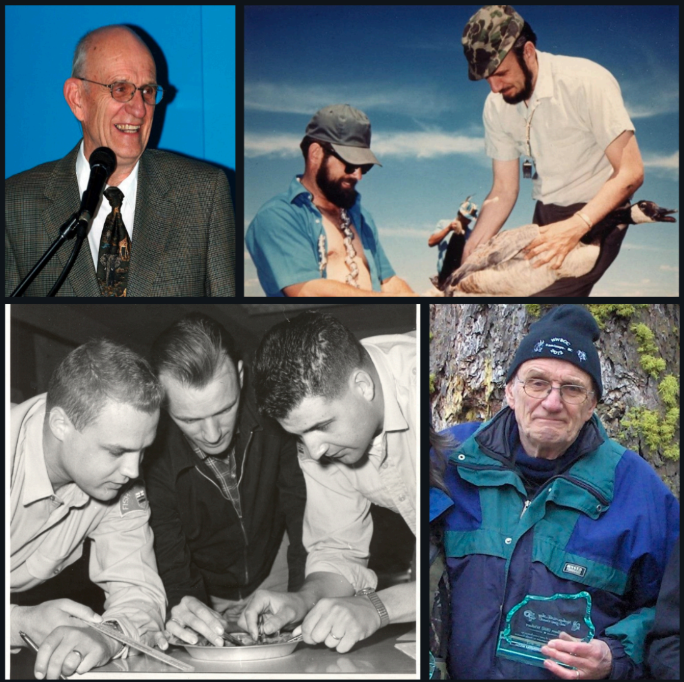
Bill Wishart Receives the 2024 Emerald Award
We are delighted to announce that Bill Wishart has been honored with the prestigious Emerald Award for his extraordinary dedication to serving Alberta’s diverse communities and wildlife resources for over six decades.
Bill is a founding member of the Alberta Chapter of The Wildlife Society and through his involvement in various conservation agencies, he has shaped the careers of numerous individuals and helped establish scientific standards for wildlife management in Alberta.
Bill’s work emphasizes the importance of landscape and ecosystem integrity for all species. His efforts have led to significant advancements in wildlife research, habitat conservation, and sustainable resource management, benefiting both current and future generations. By sharing his knowledge and passion, he has inspired successive generations of wildlife professionals to continue his legacy of stewardship and
conservation.
Congratulations, Bill, on this well-deserved recognition of your remarkable contributions to wildlife and conservation in Alberta!
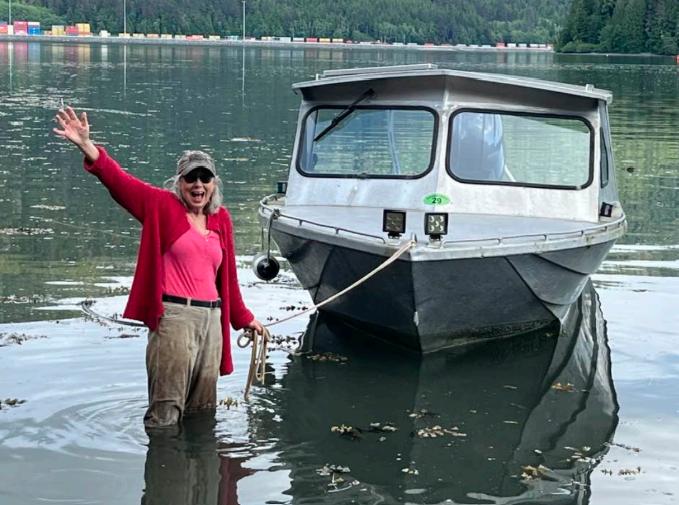
TWS’ New Vice President: Dr. Evelyn Merrill
We are thrilled to announce that Dr. Evelyn Merrill has been elected as the new Vice President of The Wildlife Society (TWS)! As an esteemed leader in the wildlife industry and a proud Albertan, Dr. Merrill has made significant contributions to our field throughout her career.
Dr. Merrill joined the University of Alberta in 1999, where she has spent half of her 47-year career. Throughout each phase of her professional journey, she has been a vital member of the TWS community—serving as a Student Chapter Advisor, holding roles in four Chapters, leading the Journal of Wildlife Management as its Editor-in-Chief, and currently acting as the Canadian Representative to Council.
We are excited to see what Dr. Merrill has in store for TWS and look forward to her leadership and vision.


